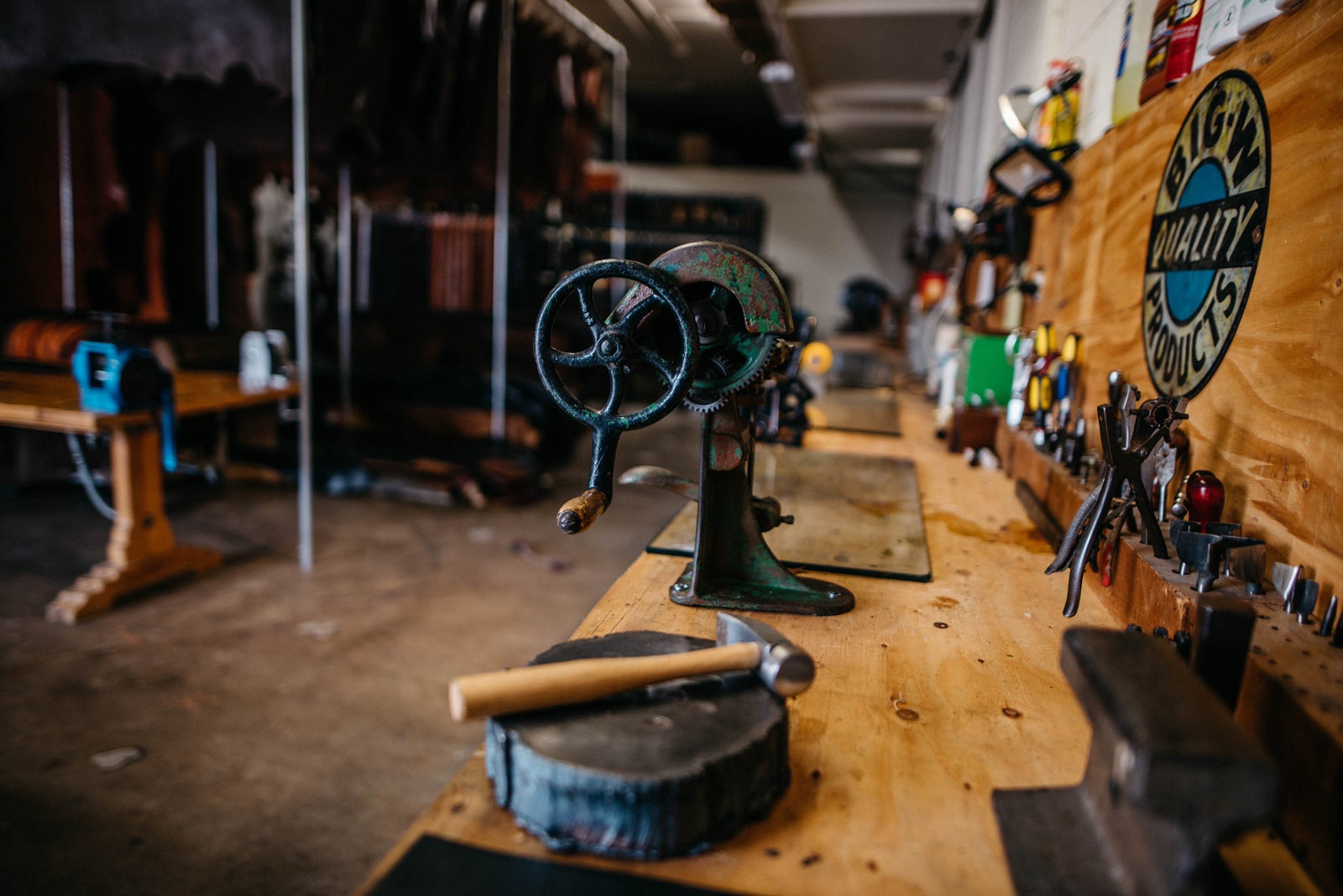HOW TO CARE FOR LEATHER
Each leather company has a different way to care for leather. When asked about proper leather care, we feel it is important to consider three points:
- HOW WAS THE LEATHER TANNED?
- HOW WAS THE LEATHER TOP FINISHED?
- HOW WAS THE LEATHER WATERPROOFED OR STUFFED?
This is the first step to understanding the two different tanning procedures and how to then provide care and maintenance.
Chrome Tanning vs. Vegetable Tanning
We will offer instructions regarding Vegetable Tanned leather cleaning and conditioning in this guide. This advice is specific to maintaining saddles, tack, holsters, our belts and some higher end handbags.
How to clean Vegetable Tanned leather:
To clean Veg tanned leather, there are many good products on the market as well as good companies that manufacture and represent them. Here are some basic cleaning principles and products we like:
- If you have a dirty veg tanned leather item use a dry, soft bristled brush to remove loose debris from the surface of the leather.
- Use a lightly dampened rag with distilled or bottled water to clean and remove surface dirt. DO NOT focus on one area, but rather a complete wipe down moving quickly and evenly. Allow the item to dry for 20 minutes.
- Select a good leather cleaner or saddle soap. Bickmore's Bick 1 works great on premium vegetable tanned items. The Bick 1 product is PH balanced so it will be safer than straight saddle soap.
We started making our own saddle soap a few years ago. Essentially there are 3 ingredients in saddle soap: Neatsfoot oil, beeswax and tallowate (Ivory Soap). We slowly and evenly melt the best of all 3 ingredients together and add 100% lanolin from South Dakota sheep's wool. We do not sell our saddlesoap at this time; however, any questions you might have I would be happy to answer to the best of my knowledge.
Remember, always test a small, hidden area or section and proceed slowly.
Drop 1 tsp. onto a moistened cotton rag and rub the rag together. Blend deep into the leather item as evenly as possible. Add 1 more tsp. and repeat the process again as evenly as possible. Less is more with saddle soap and try not to over use this invasive cleaning process when it is not needed.
Do not use on suede or nubuck finishes.
Do not use on light or natural leathers for risk of darkening the item.
A great alternative to saddle soap for smooth Top Grain vegetable tanned leather is Alpha Hydroxy. We have used this expensive skin cleaner with success and recommend it. The acidic compound has worked well in small amounts for us over the years. Amlactin is a brand that is popular and again, less is more. Use 1/2 teaspoon on a moistened cloth or rag with the same previously described process.
Once the leather has dried a few hours you can use 100% Neatsfoot oil (not Neatsfoot compound) in light coats. Saturate a cotton rag and squeeze out the excess oils. Apply to the leather evenly and thoroughly in one light coat. Ignore dark spots as they should even out as the oils level out and dry. Leave Overnight to dry and repeat if necessary. Understand that every coat that is applied will darken your leather slightly. Initially your item will look dark but that should dissipate in 24 hours or so.
Olive oil works well and was used for years by the US Calvary on their saddles for over a century. We have found it to dry a bit stickier, thus attracting dirt. As dirt and water are the enemies of leather, they tend to damage the fiber bundles. Keeping vegetable tanned leather dry, clean and well preserved, is a constant task for a vegetable tanned leather connoisseur with discriminating taste.
We like to use the motto....If your leather feels dry, reapply.
Harness Leather is quite different. Hot Stuffed/Oil/Wax Saturated in giant wooden drums at the tannery, this process conditions and plumps leather completely and inside out. The drum stuffing process can offer up to10 or 20 years of no maintenance at all. Water resistant and originally intended for field plowing leather harness, this two toned oil rich leather has become quite fashionable and popular.
Because we use vegetable tanned leather, our years of experience can only be applied to this specific leather tanning process.
We hope this guide helps and reach out to us with any questions or concerns.
CONTACT THE MANUFACTURER FOR SPECIFIC MAINTENANCE AND CLEANING PROCEDURES. ALWAYS TEST A SMALL, LESS VISIBLE AREA BEFORE PROCEEDING TO TREAT THE ENTIRE ITEM.

